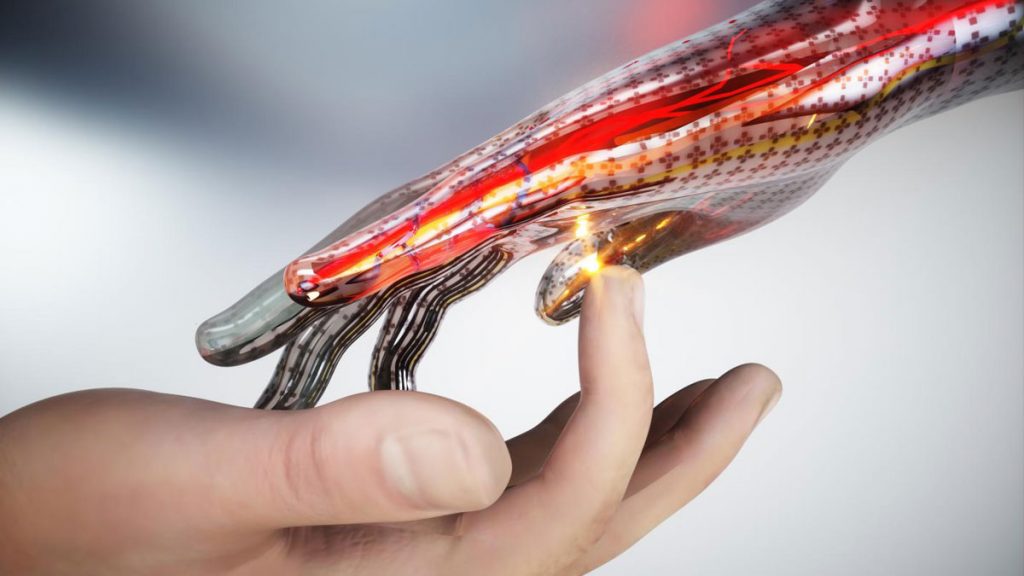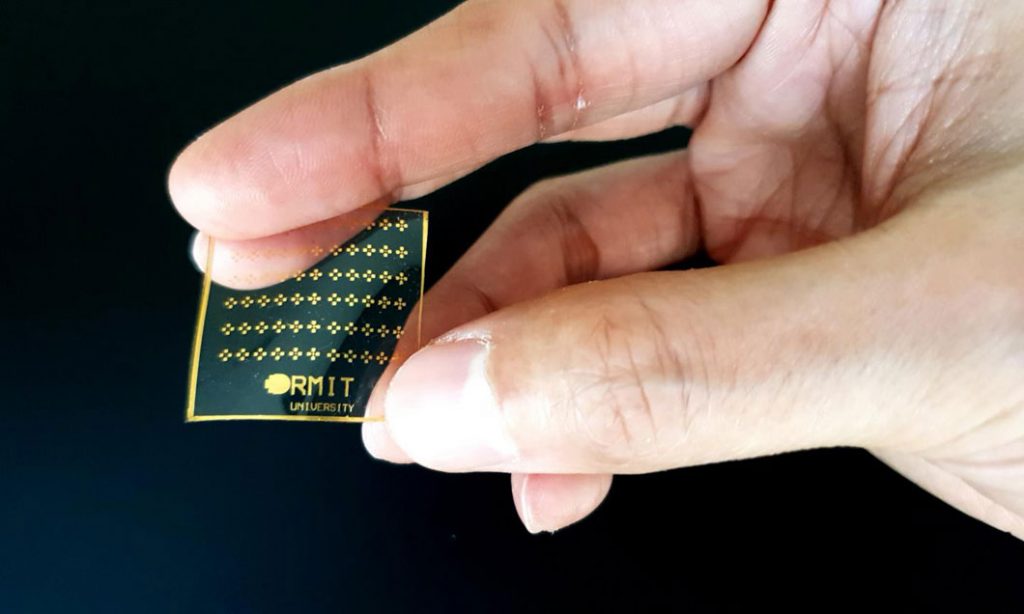
Australian researchers have succeeded in designing synthetic pores and skin that responds to painful stimuli in the identical means human pores and skin would. A serious breakthrough that paves the best way for the event of much more environment friendly prostheses and clever machines.
The first digital somatosensors
For a number of years, researchers have been engaged on the event of digital skins able to enabling robots and prostheses to find a way ” really feel the ache “. Thanks to such units, an amputee may particularly know whether or not the item he’s holding seems to be pointed or harmful, whereas machines being supplied with it will show to be extra sturdy and safer for people.
As a part of this work just lately offered within the journal Advanced Intelligent Systems, scientists from Royal Melbourne Institute of Technology have introduced that they’ve created a singular machine. Reproducing the suggestions loop of painful stimuli with an unprecedented stage of element, this digital pores and skin shouldn’t be solely in a position to distinguish completely different types of ache, but additionally their depth.
” Essentially, we created the primary digital somatosensors – replicating key options of the human physique’s complicated system of neurons, neural pathways, and receptors that govern our notion of sensory stimuli. », Explain the authors of the examine.
” While some present applied sciences have used electrical indicators to imitate completely different ranges of ache, these new units can reply to precise mechanical strain, temperature and ache, and supply the right digital response, ” add the group. “This implies that our synthetic pores and skin is aware of the distinction between gently touching a pin with the tip of our finger or unintentionally pricking ourselves with it – an important distinction that has by no means been achieved electronically earlier than.. “

“Our synthetic pores and skin reacts immediately when strain, warmth or chilly attain a painful stage”
This synthetic pores and skin incorporates three distinct detection applied sciences specifically developed by the group. This contains stretchable digital materials fabricated from biocompatible silicone as skinny as a sticker, temperature-reactive coatings that rework in response to warmth, and digital reminiscence cells designed to imitate how the mind shops this info. .
” We are continually feeling issues via our pores and skin, however our response to ache is barely triggered after a sure threshold, particularly after we contact one thing too sizzling or too sharp. », Explains the professor Madhu Bhaskaran, lead creator of the examine.
” Until now, no digital know-how has been in a position to realistically mimic this very human feeling of ache. Our synthetic pores and skin reacts immediately when strain, warmth or chilly reaches a painful stage. This is a important step sooner or later growth of the delicate suggestions programs we have to ship really clever prosthetics and robotic units.. “
With additional work, the group imagines that digital pores and skin may someday be used for non-invasive pores and skin grafts. ” We have to additional develop this know-how earlier than contemplating completely different biomedical purposes, however the fundamentals – biocompatibility, skin-like extensibility – are already there. “, The researchers conclude.
